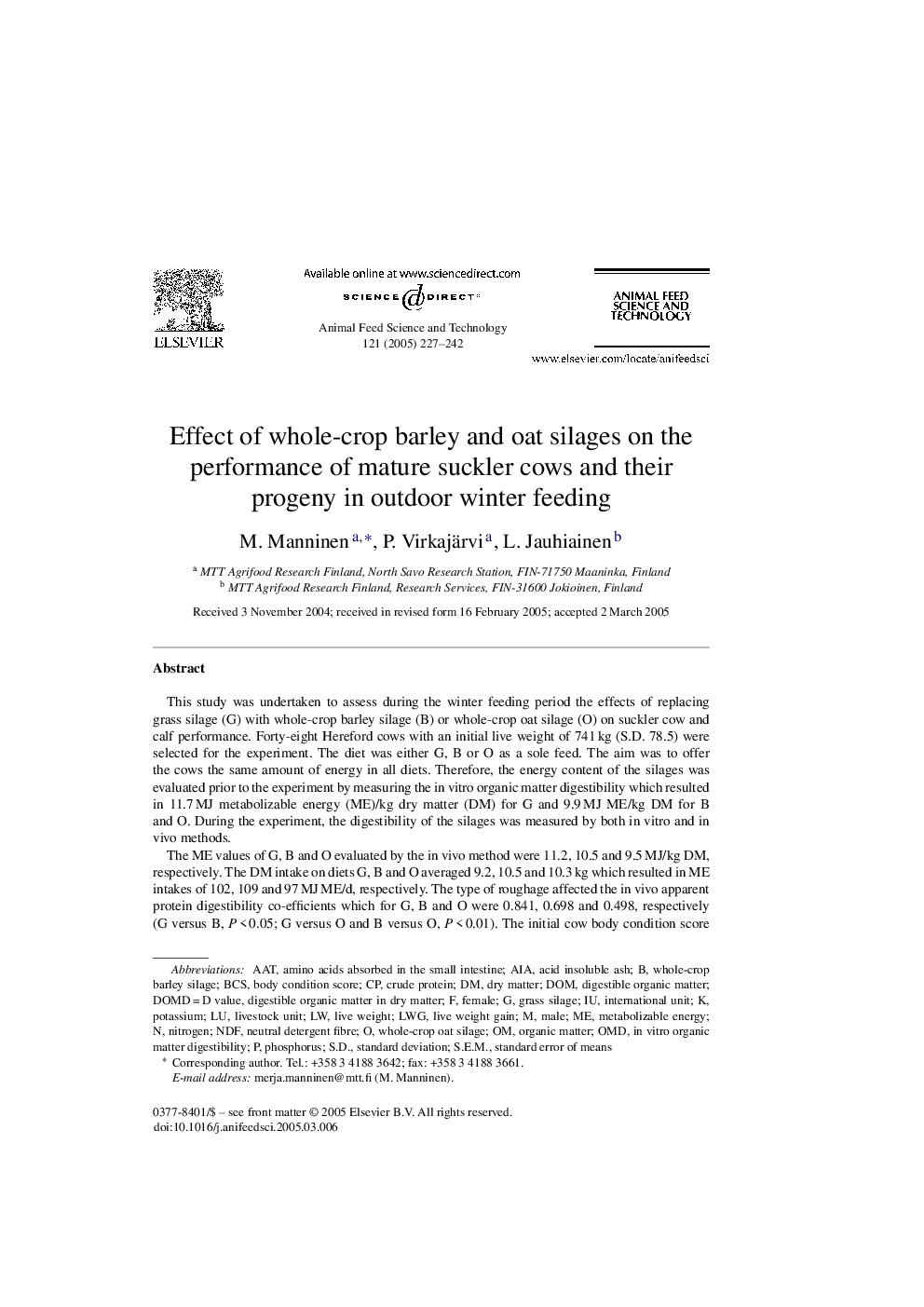| Article ID | Journal | Published Year | Pages | File Type |
|---|---|---|---|---|
| 8973730 | Animal Feed Science and Technology | 2005 | 16 Pages |
Abstract
The ME values of G, B and O evaluated by the in vivo method were 11.2, 10.5 and 9.5Â MJ/kg DM, respectively. The DM intake on diets G, B and O averaged 9.2, 10.5 and 10.3Â kg which resulted in ME intakes of 102, 109 and 97Â MJÂ ME/d, respectively. The type of roughage affected the in vivo apparent protein digestibility co-efficients which for G, B and O were 0.841, 0.698 and 0.498, respectively (G versus B, PÂ <Â 0.05; G versus O and B versus O, PÂ <Â 0.01). The initial cow body condition score (BCS) averaged 3.2 (S.D. 0.23). Pre-grazing the change of BCS and the live weight gain (LWG) for G, B and O cows was on average 0.23, 0.09 and â0.39 (G versus O and B versus O, PÂ <Â 0.001) and â20, â9 and â56Â kg (G versus O, PÂ <Â 0.05; B versus O, PÂ <Â 0.01), respectively. All calves were born before the grazing season and milk and grass were the sole feeds at pasture. The pre-weaning calf LWG was not affected by the diets averaging 1357Â g/d. The daily milk yield on diets G, B and O averaged 11.4, 10.3 and 9.5Â kg (G versus O, PÂ <Â 0.05), respectively. Forty-two out of 48 cows entered the mating period of which all were observed to be pregnant. The interval from calving to conception averaged 89 days. B and O proved to be suitable winter feeds for mature suckler cows in cold winter circumstances. Especially O had a lower energy and protein content than G but fulfilled the energy and protein demands of mature, pregnant beef cows in good body condition.
Keywords
digestible organic matter in dry matterLWGAIAOMDNDFAATS.E.M.S.D.Live weight gainstandard deviationMetabolizable energyFeedingReproductionAcid insoluble ashstandard error of meansBCsFemaleGrass silageMilkPhosphorusneutral detergent fibreDOMorganic matterdigestible organic matterdry matterMaleBody condition scoreNitrogenIn vitro organic matter digestibilityinternational unitlivestock unitLive weightBody conditionPotassiumcrude proteinGrazingBeef
Related Topics
Life Sciences
Agricultural and Biological Sciences
Animal Science and Zoology
Authors
M. Manninen, P. Virkajärvi, L. Jauhiainen,
